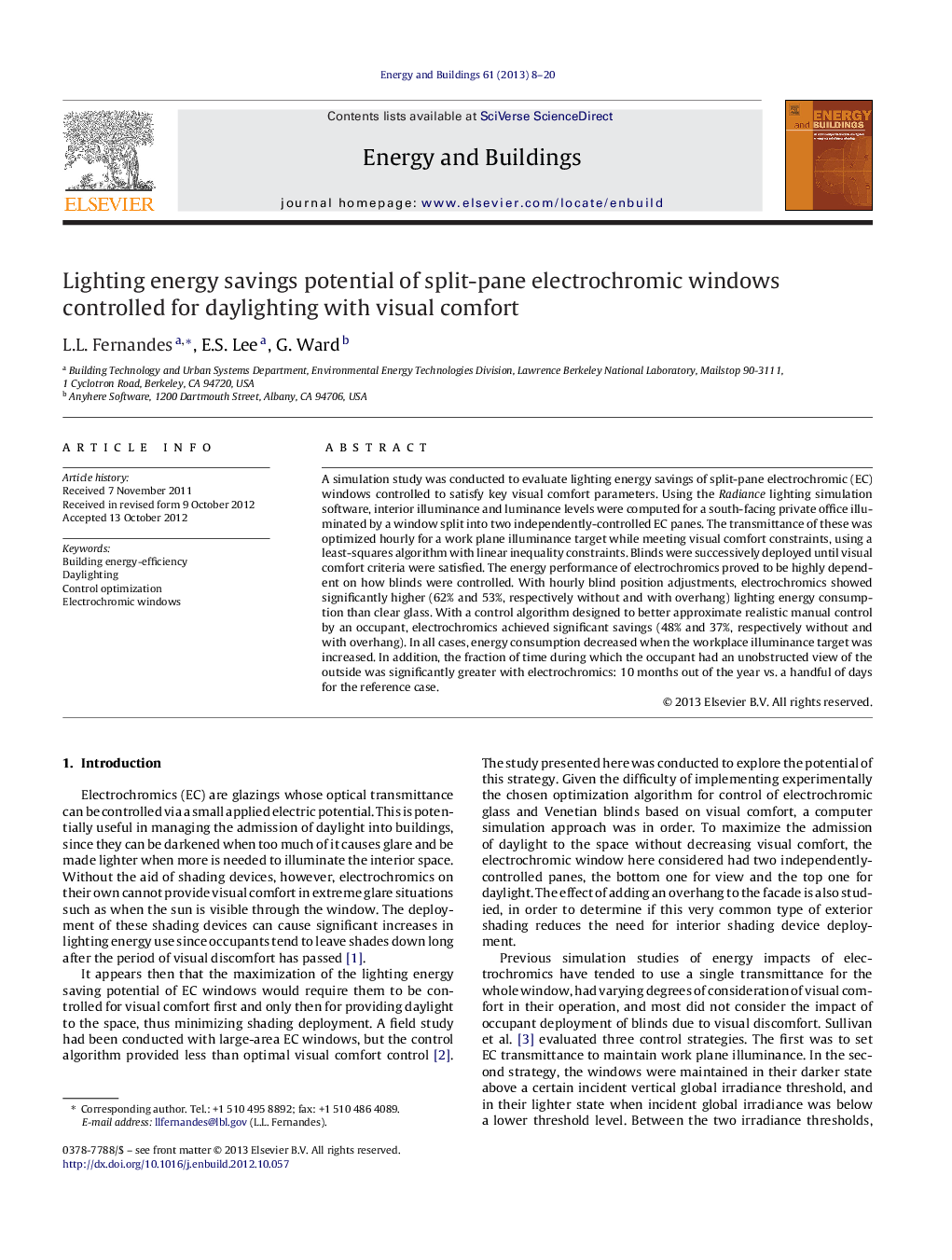| کد مقاله | کد نشریه | سال انتشار | مقاله انگلیسی | نسخه تمام متن |
|---|---|---|---|---|
| 263431 | 504075 | 2013 | 13 صفحه PDF | دانلود رایگان |

A simulation study was conducted to evaluate lighting energy savings of split-pane electrochromic (EC) windows controlled to satisfy key visual comfort parameters. Using the Radiance lighting simulation software, interior illuminance and luminance levels were computed for a south-facing private office illuminated by a window split into two independently-controlled EC panes. The transmittance of these was optimized hourly for a work plane illuminance target while meeting visual comfort constraints, using a least-squares algorithm with linear inequality constraints. Blinds were successively deployed until visual comfort criteria were satisfied. The energy performance of electrochromics proved to be highly dependent on how blinds were controlled. With hourly blind position adjustments, electrochromics showed significantly higher (62% and 53%, respectively without and with overhang) lighting energy consumption than clear glass. With a control algorithm designed to better approximate realistic manual control by an occupant, electrochromics achieved significant savings (48% and 37%, respectively without and with overhang). In all cases, energy consumption decreased when the workplace illuminance target was increased. In addition, the fraction of time during which the occupant had an unobstructed view of the outside was significantly greater with electrochromics: 10 months out of the year vs. a handful of days for the reference case.
► We examine the lighting energy savings potential of electrochromic (EC) windows.
► We model a 2-pane EC with Venetian blinds (VB), controlled for daylight without glare.
► Surprisingly, with hourly control, ordinary glass with VB uses less energy than EC.
► With more realistic, daily blind control algorithm, EC has the advantage.
► With both algorithms, EC provides more time with unobstructed view.
Journal: Energy and Buildings - Volume 61, June 2013, Pages 8–20